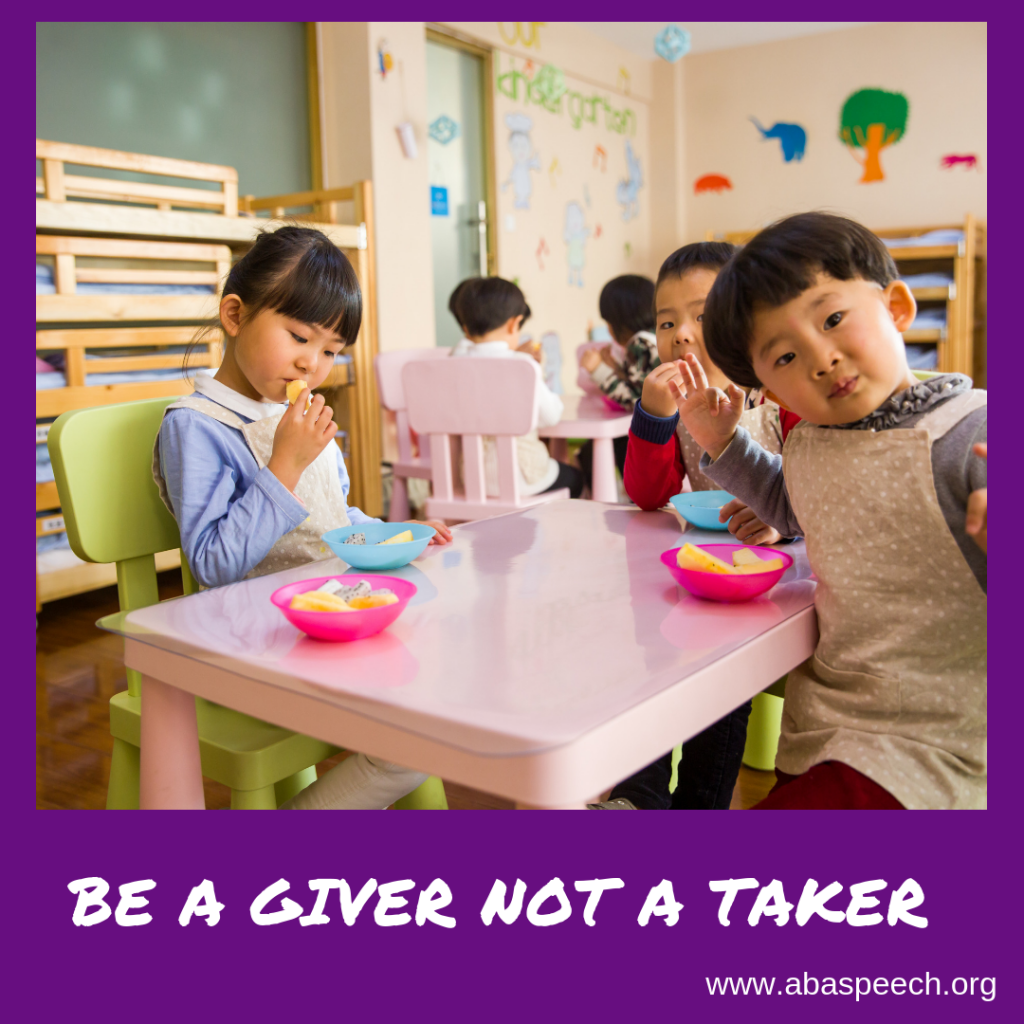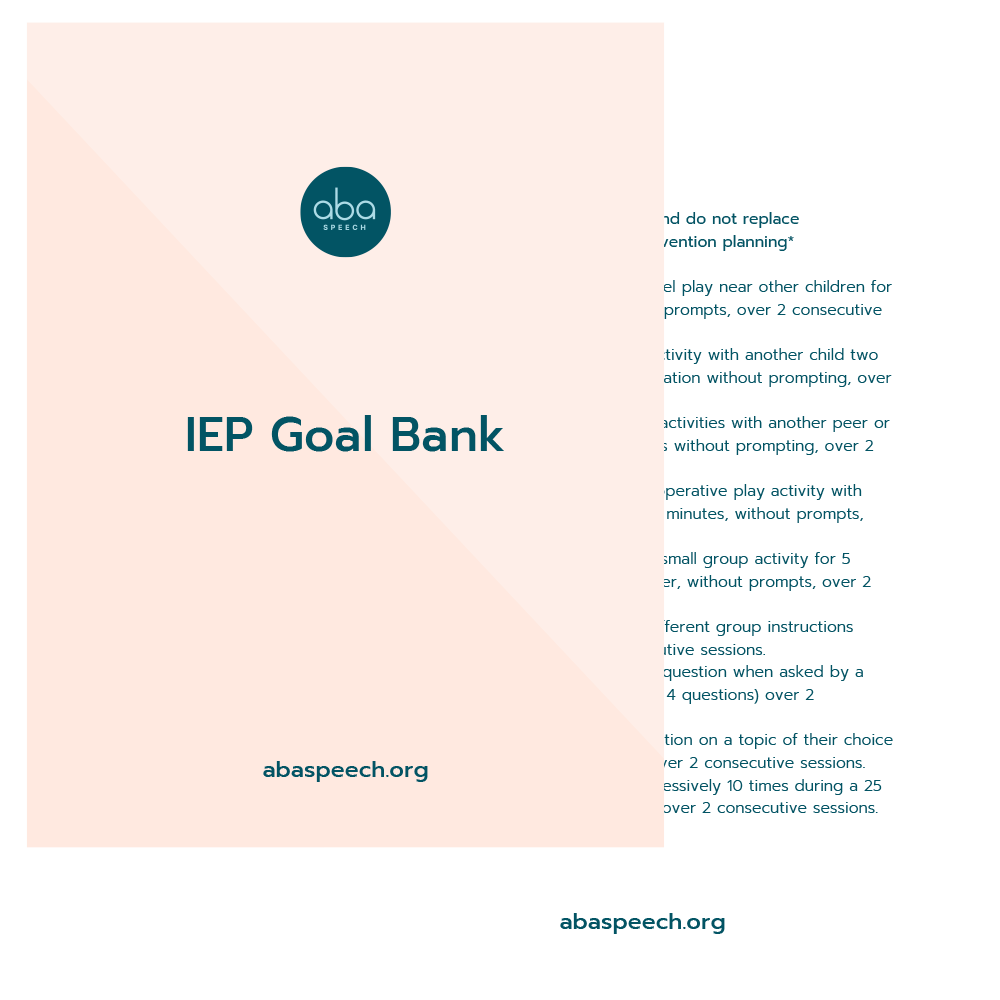
Working with early learners who are developing a way to communicate with the world can be so very exciting! Watching a student learn that their communication matters and is powerful is an amazing process. Manding or requesting is a vital skill to work on for student’s at this language level. Below I will chat about general manding and share my most important tip “be a giver not a taker.” Read on to learn more!
Once you have a rapport with your student and they are eager to see and work with you, we move onto manding. Manding is a skill that should be worked on throughout the day for early learners. When we first address manding, we should work in the student’s natural environment: we call this “natural environment teaching” (NET). This gives us the opportunity to consider the child’s interests and motivation moment to moment, and use them to support manding. If, for example, you are with a preschool-aged student reading a book, and they see the iPad and want to watch a movie instead, you could help them request “movie” (or “watch movie,” depending on if they are using one or two words to request). Likewise, if you are with a 2-year-old non-verbal client in their home and they see a cookie up on the counter that they are motivated to eat, you could help them to successfully request “cookie” .
In addition to naturally-occurring opportunities to encourage manding, structured manding sessions are also important. One mistake that I made time again when working with early learners was being a taker. I would have the student request something they loved, they would play with the item and then I would take it back, so they could request again. This may or may not result in the student protesting by engaging in problem behavior ( i.e. yelling, hitting, etc..). The session then becomes focused on getting the student back to being ready to learn. This is something that happens time and again in manding sessions all over! Learn from my mistake. Read below to learn more.
Be a giver not a taker.
The general idea is that you do not want to take away preferred items from a student with autism: by taking away wanted items you may inadvertently motivate a student to engage in maladaptive behavior, especially a student who has limited or no functional response form.
EXAMPLE #1
Don’t Do This…
Student: Is working on manding with teacher at a table in his classroom. He requests to play with the Lego blocks.
Teacher: Gives the student the entire bucket of Lego blocks and lets them play with them for 2 minutes.
Student: Is building a tower with the blocks and smiling.
Teacher: Wants to get more work with requesting, so takes the Lego block container away and says, “What do you want?”
Student: Yells “No” and falls to the floor.
…Do This
Student: Is working on manding with the teacher at a table in his classroom. He requests to play with the Lego blocks.
Teacher: Gives the student 8 Lego blocks and says, “Have fun building with the Lego blocks.”
Student: Is building a tower with the blocks and smiling. After about a minute, he has used all of the Lego blocks that he was given. He looks at the teacher and says “Lego blocks.”
Teacher: “Awesome asking, here you go.” Gives the student 8 more Lego blocks.
Reflection: In the “Do This” example you are being a giver, not a taker: you are giving the student more Lego blocks. This will help you pair with the student, because you are offering items that he or she likes. By giving the student a handful of Lego blocks at a time and keeping the others in your possession, you also set up a natural motivation for the student to ask for more. In addition, the student is learning that their communication is powerful: I ask for Lego blocks, I get Lego blocks.
EXAMPLE #2
Don’t Do This…
Student: Is sitting at a snack group with one other student that is being run by a paraprofessional. The student requests juice.
Paraprofessional: Hands the student her juice box.
Student: Sits and eats her snack and drinks her juice for the next 5 minutes in silence.
Paraprofessional: To give the student more opportunities to request wanted items, takes away the juice box and asks, “What do you want?”
Student: Hits the paraprofessional and has a 10 minute tantrum
…Do This
Student: Is sitting at a snack group with one other student that is being run by the paraprofessional. The student requests juice.
Paraprofessional: Gives the student a cup and fills it up with a portion of her juice box.
Student: Sits and eats her snack and drinks the juice. When she finishes the juice in the cup, she says, “I want to drink more juice.”
Paraprofessional: Says, “Here you go,” and pours more juice into her cup. This happens 3 more times during the snack group.
Reflection: In the “Do This” example you are being a giver, not a taker: by giving the student a cup with a portion of juice, you have created a motivation for the student to ask for more juice. You have something that the student wants, and the student has a naturally occurring opportunity to ask for more.
Being mindful of this strategy “BE A GIVER NOT A TAKER” will allow for more opportunities to request items and actions, in hopes that there will be less problem behavior and more spontaneous communication.
Want to learn more strategies for working with early learners who are struggling to communicate? Put your email below and take my freebie mini autism course. Free quickstart guide included!
Take the free autism mini course
Help your students find their voice

0 Comments